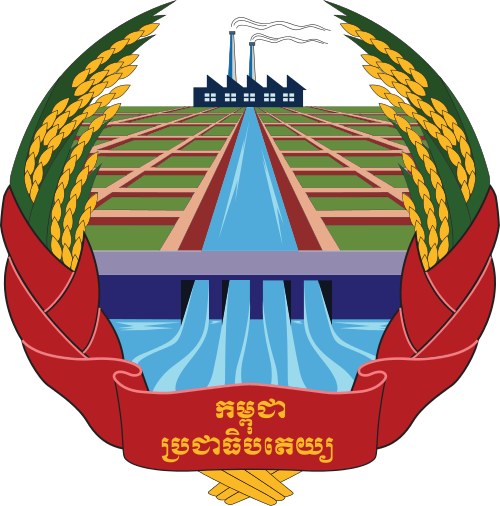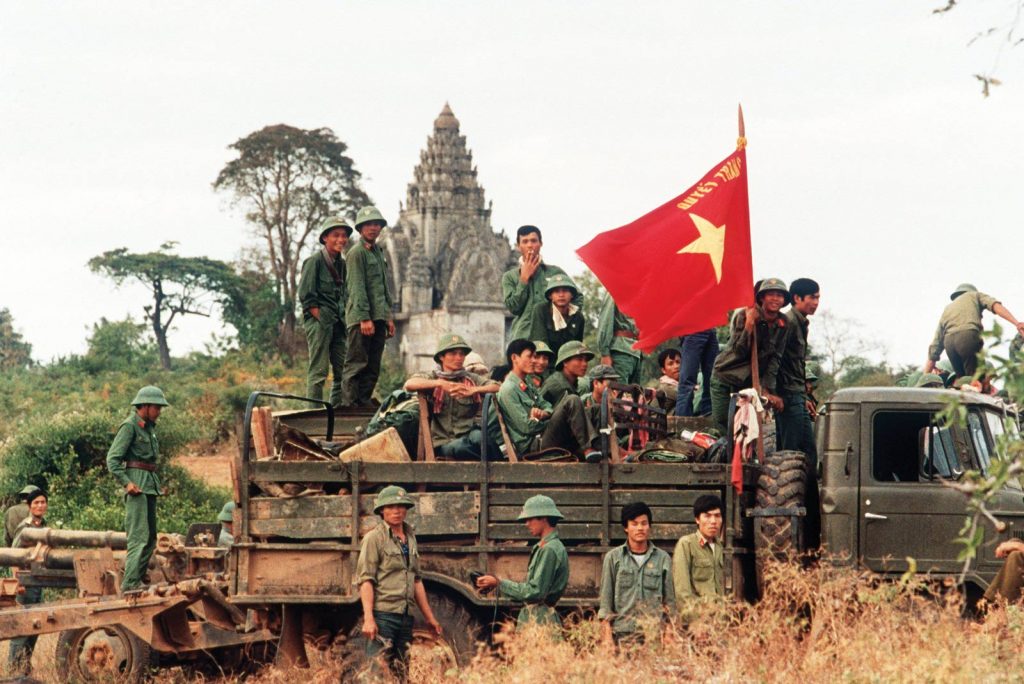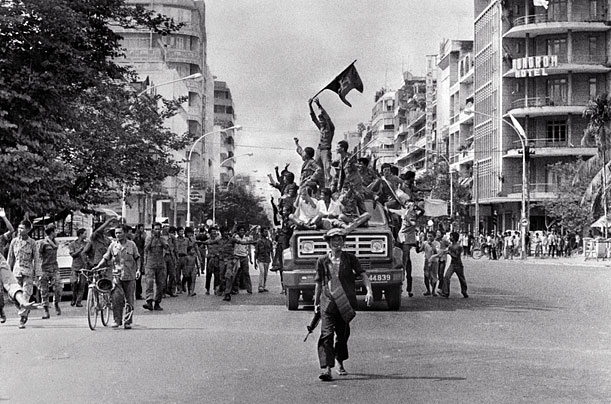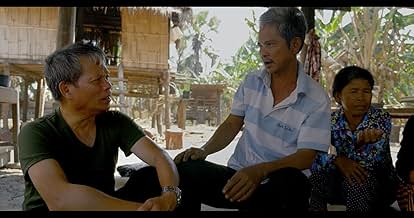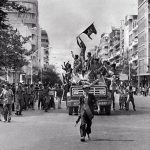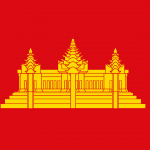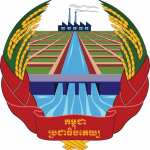The Revolutionary Army of Democratic Kampuchea (RADK) was a pivotal military force in the governance and military strategy of the Khmer Rouge regime from 1975 to 1979. As the armed wing of the Communist Party of Kampuchea (CPK), the RADK was central to the establishment and defense of Democratic Kampuchea during a tumultuous period in Cambodian history. This page explores the RADK’s structure, its relationships with other factions, its identity during significant historical events, and its ultimate transformation following its defeat by Vietnam.
Structure and Purpose of the RADK
Upon seizing power in April 1975, the RADK emerged as the military force tasked with enforcing the Khmer Rouge’s radical agrarian policies and maintaining internal security. It was primarily composed of former members of the National Front of the Kampuchean People (FUNK) and former soldiers from the Royal Cambodian Army, many of whom were absorbed into the new military structure.
The RADK was organized into various units, including infantry, artillery, and specialized divisions, each responsible for different aspects of military operations. Their primary objective was to protect the nascent state from both external threats and internal dissent, as well as to secure the implementation of the Khmer Rouge’s radical policies.
Relationship with GRUNK and FUNK
The Government of the Royal United National Kampuchea (GRUNK) and FUNK played significant roles in the history of the RADK and the Khmer Rouge.
- GRUNK was established in 1970 during the civil war, serving as a coalition government that aimed to unite various factions against the Lon Nol regime. The Khmer Rouge was a significant part of this coalition and utilized the GRUNK as a means of legitimizing their claims to power.
- FUNK, the military branch associated with GRUNK, was a critical component in the fight against the Lon Nol government. After the Khmer Rouge came to power, many of the structures and personnel from FUNK were integrated into the RADK. This relationship allowed the RADK to benefit from the experience and military strategies developed during the civil war, making it a formidable force in the region.
Both GRUNK and FUNK shaped the RADK’s early identity, as they were instrumental in the Khmer Rouge’s rise to power. However, after the establishment of Democratic Kampuchea, the focus shifted to consolidating power within the RADK and the CPK.
The Mayaguez Incident and the Legacy of the RADK
One of the most notable events involving the RADK was the Mayaguez Incident in May 1975, which occurred shortly after the Khmer Rouge took power. The Mayaguez, an American merchant vessel, was seized by the RADK as part of its broader strategy to assert its independence and challenge American influence in the region.
During this incident, the RADK forces still referred to themselves as the Royal Army, a reflection of their historical roots in the former Royal Cambodian Army. This designation indicated a continuity of identity that persisted even after the formal declaration of Democratic Kampuchea. It highlights the complexities within the RADK, as many soldiers retained loyalties to their past while simultaneously embracing the Khmer Rouge’s radical ideological framework.
The U.S. response to the Mayaguez incident involved a military operation to reclaim the ship and its crew, resulting in a confrontation with the RADK. This operation underscored the tenuous position of the Khmer Rouge regime on the international stage and illustrated the challenges it faced in establishing its authority.
Governance and Internal Operations
While the RADK was primarily a military force, it also played an essential role in governance and internal operations within Democratic Kampuchea. RADK units were often tasked with maintaining order in the countryside, enforcing the policies of the Khmer Rouge, and conducting campaigns against perceived enemies of the state.
The army was involved in various campaigns, including forced evacuations of cities and the establishment of cooperative farming practices, reflecting the Khmer Rouge’s emphasis on agrarian socialism. However, these policies were often implemented with brutal efficiency, resulting in widespread suffering and loss of life.
The Role of Angkar
The RADK operated under the direct control of Angkar, the shadowy organization synonymous with the Khmer Rouge leadership. This relationship ensured that military operations aligned with the ideological goals of the CPK. The army was expected to maintain strict discipline and loyalty to Angkar, with dissent being dealt with swiftly and often violently.
The Defeat by Vietnam and the Transformation into NADK
The RADK’s tenure was marred by conflict, culminating in its defeat against the People’s Army of Vietnam (PAVN) in 1978. Following a series of border skirmishes and escalating tensions, Vietnam invaded Cambodia in December 1978, leading to the fall of the Khmer Rouge regime in January 1979.
After the invasion, many former RADK members retreated to the jungles and continued their resistance against the new Vietnamese-backed government. This regrouping led to the formation of the National Army of Democratic Kampuchea (NADK), which aimed to maintain the Khmer Rouge’s goals and continue the fight against the Vietnamese occupation.
The NADK maintained a semblance of the original RADK structure but evolved as it sought to adapt to the new political realities of the region. While the NADK no longer held official power, it remained a symbol of the Khmer Rouge’s enduring presence in Cambodian politics, albeit as a largely marginalized faction.
Conclusion
The Revolutionary Army of Democratic Kampuchea was a vital component of the Khmer Rouge regime, responsible for enforcing radical policies and defending the newly established state. Its origins in GRUNK and FUNK provided a historical context that influenced its operations during the early years of Democratic Kampuchea.
The identity of the RADK, particularly during events such as the Mayaguez Incident, reflects the complex interplay between past loyalties and new ideological commitments. Ultimately, the RADK’s defeat against Vietnam and subsequent transformation into the NADK illustrates the shifting dynamics of power in Cambodia, highlighting the enduring legacy of the Khmer Rouge in the nation’s tumultuous history.
